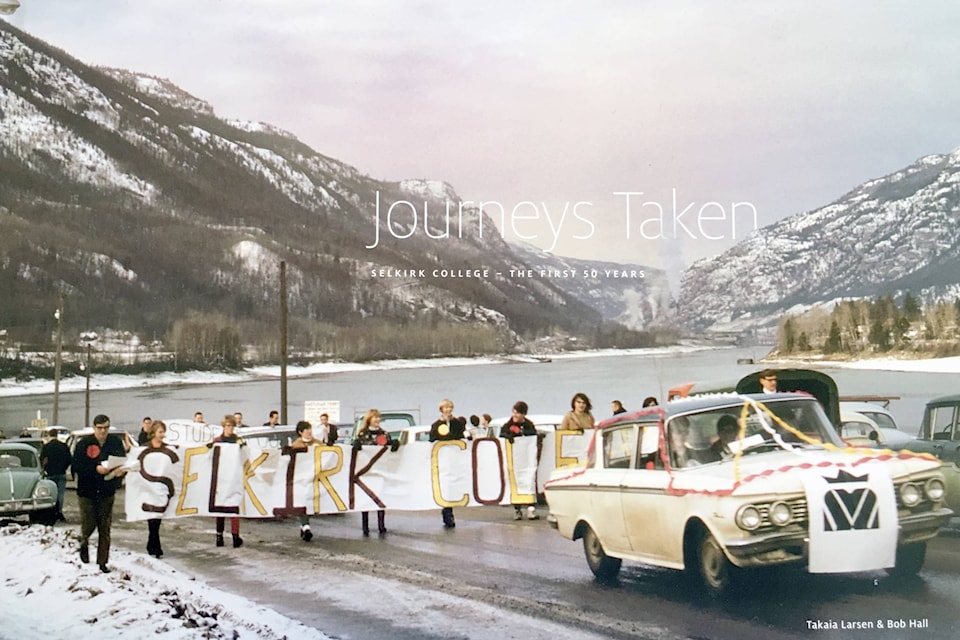It was an honour to attend Selkirk College’s graduation recently.
It was the College’s 50th graduation ceremony since it began way back in 1966 when it started as a bunkhouse campus at Celgar pulp mill. It was neat to hear about the changes to the College over those 50 years, and it was quite obvious that the student population and student life have changed dramatically.
After the ceremony and the outdoor photographic session, I picked up a copy of the newly published coffee-table book highlighting Selkirk’s “first 50 years.”
Called Journeys Taken and written, photographed, and compiled by Takaia Larsen and Bob Hall, it is a spectacular overview of the 1966 to 2017 college journey. As one of my friends commented, “I only flipped through it, but it’s impressive.”
What’s impressive about it is the combination of historical fact, local commentary, and photographic viewpoint. We learn how the college began, how it progressed from then to now, and what people at the college and in the area thought about it. It’s excellent provincial and local history that needed to be gathered and published to help old-timers remember. It also gives newcomers an appreciation of how the college developed to its current state.
The cover photo of the book shows students and staff from 1967 making the “great trek” from the pulp mill to the new campus. The trekkers in the photo carry a huge sign indicating “Selkirk College” in the college’s chosen colours of gold and royal purple. In front is a decorated car with the new Selkirk emblem attached to the front. There’s snow along the roadway and along the Columbia River. It’s a grey day, but that doesn’t seem to bother the crowd of people as they march resolutely to their new campus.
One of the book’s features I appreciated was the contrast between old and new, then and now. In particular, I liked the side-by-side photos of the Castlegar Selkirk site on its peninsula of land. It was a shock for me to note the bare peninsula from before the building began in the 1960s and to view the developed college now on the next page.
The writing style in Journeys Taken is straightforward and easy to follow. I loved reading the early history of the college in the book’s first section. I learned a lot of new information about that time, not the least being the involvement of students in both the development of the college and their own learning. I also admired the authors dropping in little asides such as this “great trek” perhaps mirroring UBC’s great trek much earlier.
Most of the major programs and developments within the college over the years are highlighted, and much space is given to what happened at various campuses such as those in Nelson, Trail, Nakusp, Grand Forks, and elsewhere. Those histories are vital and interesting as are the narratives of those who put their energies into creating learning in those places.
Many biographical sketches of retired and current faculty members show just what it was like to teach at the college’s campuses. As well, these portraits outline how faculty and staff initiated and mentored programs now vital to the college’s growth. Clearly, everyone will enjoy the inclusion of stories about various individuals who had a profound influence on what the college has come to be — beginning of course with the first Principal, Gordon Campbell.
The book is carefully researched, smoothly written, and remarkably supported by photographs. From charter student Alex Wallach’s profile and photo near the beginning to charter student Norm Wolfe’s comments near the end, the book is a delight to read and to discover what happened at Selkirk College over the past 50 years.
